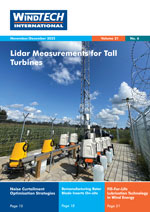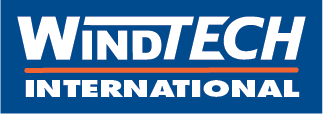 TenneT is building the Hollandse Kust (South) offshore grid to the north of the Maasvlakte, to connect new Dutch wind farms. Four cables will have to be routed into the North Sea seabed for this. The cables have to be buried more than 5 metres in the seabed for the first ten kilometres of the offshore cable route, as to be able to cross the Rotterdam Maasmond shipping lane. For this specific job, Van Oord designed and built the Deep Dig-It trencher, a remotely controlled trencher.
TenneT is building the Hollandse Kust (South) offshore grid to the north of the Maasvlakte, to connect new Dutch wind farms. Four cables will have to be routed into the North Sea seabed for this. The cables have to be buried more than 5 metres in the seabed for the first ten kilometres of the offshore cable route, as to be able to cross the Rotterdam Maasmond shipping lane. For this specific job, Van Oord designed and built the Deep Dig-It trencher, a remotely controlled trencher.Van Oord, being part of the Van Oord-Hellenic Cables consortium, is conducting final tests with this machine in the Alexiahaven (harbour), in preparation for the actual installation of the sea cables in July.
The Deep Dig-It is a so-called “Tracked Remotely Operated Vehicle” (TROV), which drives unmanned over the seabed, creating a deep trench for the cables, while simultaneously inserting the cables and then closing the trench again. The trencher weighs 125.000 kilos, is more than 17 metres long, well over 8 metres high, and 11 metres wide. It has an installed power of 2,500 HP. The Deep Dig-It will be controlled from Van Oord’s offshore installation vessel MPI Adventure, which is equipped with a crane that launches and recovers the Deep Dig-It into the sea.
The Hollandse Kust (South) offshore wind farm is 22 kilometres off the coast of the Dutch province of Zuid-Holland. The sea cables connect the two offshore platforms with the Maasvlakte high voltage substation and the Randstad 380 kV South ring. Wind energy is then transported to electricity consumers across the country through the national high voltage grid. The project will be completed in 2022: Alpha (700MW) in 2021 and Beta (700MW) in 2022.










